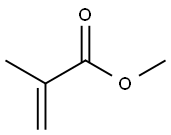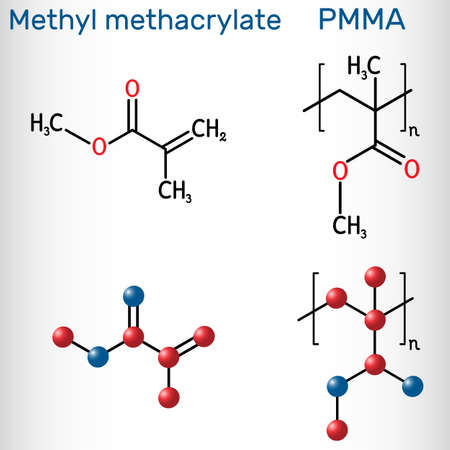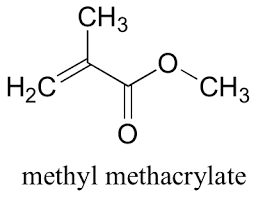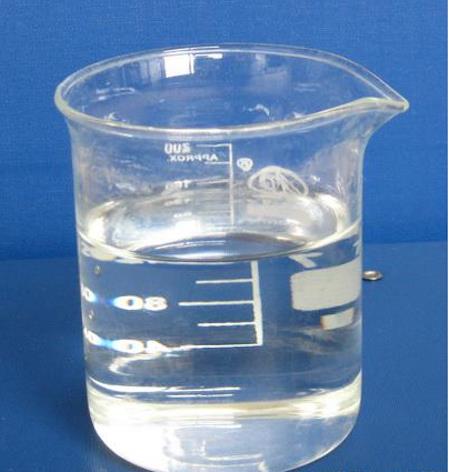Methyl methacrylate: Application, synthesis and toxicity
General description
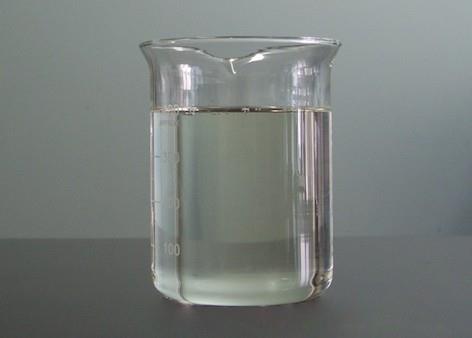
Figure 1 Appearance of Methyl methacrylate.
Application
The principal application, consuming approximately 75% of the Methyl methacrylate, is the manufacture of polymethyl methacrylate acrylic plastics (PMMA). Methyl methacrylate is also used for the production of the co-polymer methyl methacrylate-butadiene-styrene (MBS), used as a modifier for PVC. Another application is as cement used in total hip replacements as well as total knee replacements. Used as the "grout" by orthopedic surgeons to make the bone inserts fix into bone, it greatly reduces post-operative pain from the insertions but has a finite lifespan. Typically the lifespan of methyl methacrylate as bone cement is 20 years before revision surgery is required. Cemented implants are usually only done in elderly populations that require more immediate short term replacements. In younger populations, cementless implants are used because their lifespan is considerably longer.[1] Also used in fracture repair in small exotic animal species using internal fixation.
Methyl methacrylate is a raw material for the manufacture of other methacrylates. These derivatives include ethyl methacrylate (EMA), butyl methacrylate (BMA) and 2-ethyl hexyl methacrylate (2-EHMA). Methyl methacrylate is used as a chemical intermediate as well as in the manufacture of coating polymers, construction chemicals and textile applications. Wood can be impregnated with Methyl methacrylate and polymerized in situ to produce a stabilized product.
Synthesis
According to the previous work, Methyl methacrylate can be synthesized by the following steps [2]: A solution of 375 g of aluminum nitrate nonahydrate, 256 g of magnesium nitrate hexahydrate and 54 g of 60% nitric acid in 500 mL water were added dropwise at 15 °C to 2 kg of silica sol solution with 10-20 nm particle size (Nissan Chemical Industries, Snowdex N-30, 30 wt% SiO2). The mixture was stirred for 24 hours at 50 °C, cooled to room temperature, spray-dried (130 °Cand calcined (300-600 °C, a total of 10 hours). 30 g of the SiO2-Al2O3-carrier was suspended in 100 mL of water and heated at 90 °C. This suspension was added in 15 min at 90 °C to a solution of 1.64 g of nickel nitrate hexahydrate and 530 mg acid (HAuCl4) in 100 mL of water.
After another 30 min of stirring at 90 °C, cooled and the solid was separated, then stirred three times with 100 mL of fresh water for 5 minutes each at 20 °C and filtered. The catalyst was dried at 105 °C within 10 hours and calcined at 450 °C for 5 hours in air. The violet powder obtained by ICP analysis contained 1.1% Ni and 0.9% Au. The average particle size of gold nanoparticles (TEM) was less than 5 nm. A mixture of 0.67 g of methacrolein (from Example 1), 5.65 g of methanol and 504 mg Au catalyst 1 were stirred in an autoclave under 11 bar of O2/N2 gas mixture (7 Vol-% O2) at 80 °C over 2 hours, then cooled, filtered and analyzed by GC. Space-time yield 9.3 MMA mol/kg cat-hr. Conversion of MAL was 98.4%, Yield at Methyl methacrylate 94.8%.
Toxicity
In terms of the acute toxicity of Methyl methacrylate, the LD50 is 7-10 g/kg (oral, rat). It is an irritant to the eyes and can cause redness and pain.[3] Irritation of the skin, eye, and nasal cavity has been observed in rodents and rabbits exposed to relatively high concentrations of methyl methacrylate. Methyl methacrylate is a mild skin irritant in humans and has the potential to induce skin sensitization in susceptible individuals.[4]
References
[1]Nordin (2001). Basic Biomechanics of the Musculoskeletal System. New York: Lippincott Williams & Wilkins. pp. 401–419.
[2]Krill et al. (2014). Method for producing methylmethacrylate. Patent Number: WO2014170223.
[3]Methyl methacrylate. NIOSH Pocket Guide to Chemical Hazards. Centers for Disease Control and Prevention. Retrieved 2020-01-26.
[4]Archived copy. Archived from the original (PDF) on 2013-01-24. Retrieved 2013-10-29.
Related articles And Qustion
See also
Lastest Price from Methyl methacrylate manufacturers

US $10.00/kg2025-04-21
- CAS:
- 80-62-6
- Min. Order:
- 1kg
- Purity:
- 99.5%
- Supply Ability:
- 100 TON
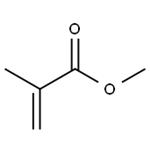
US $0.00/kg2025-04-15
- CAS:
- 80-62-6
- Min. Order:
- 20kg
- Purity:
- 99.0%
- Supply Ability:
- 20 tons
